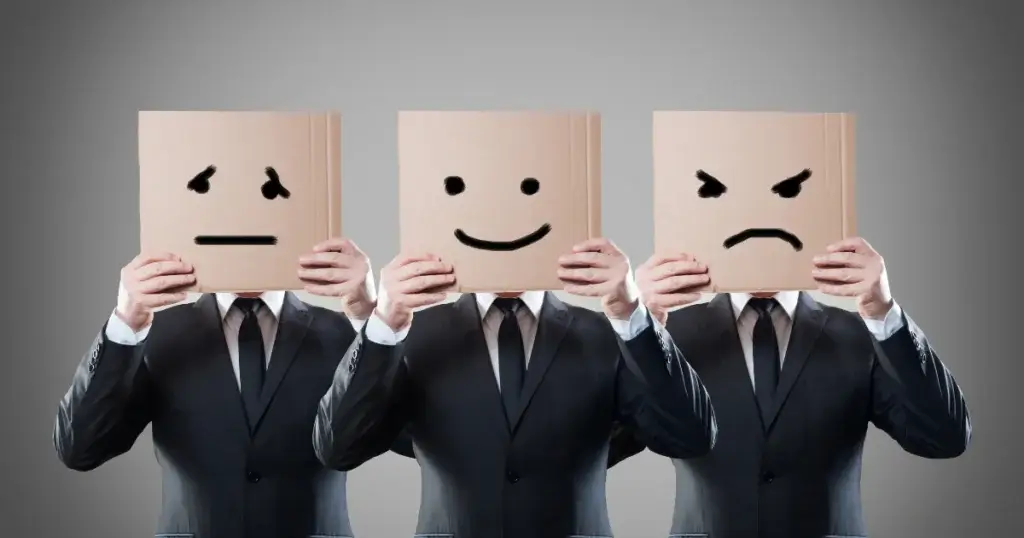How To Defuse Your Emotional Triggers And Unlock Your Inner Peace?
We all experience a range of emotions throughout the day. But sometimes, something seemingly small can cause a surprisingly big reaction. This is because of emotional triggers.
Imagine you’re sailing on a beautiful day. Everything is peaceful and calm, just like when you’re feeling good. Then, out of nowhere, there’s a loud BANG! The boat jerks violently, and you start to panic. This is similar to what happens when we encounter a trigger. It’s something unexpected that throws you off balance, like going from a happy sail to a scary situation.
So why can something small cause such a big reaction? It’s because of our past experiences. Imagine our past is like a big map, and certain events are marked like landmarks. Triggers are like hidden landmines on this map. They don’t seem like much, but if you bump into one (by experiencing something similar to the past event), it can blow up your emotions. That’s why seemingly unimportant things can trigger big feelings!

Déjà Vu of the Feels: How the Past and Triggers Haunt Our Emotions
Our brains are like sophisticated alarm systems, constantly scanning the environment for potential threats. When we experience a traumatic or emotionally charged event, this system goes into overdrive. Our minds are like vigilant sentries, scanning the world for anything amiss. When we encounter a shocking or emotionally charged event, this vigilance goes into overdrive. Here’s how this plays out:
i. The Snapshot
The amygdala, often called the brain’s “alarm center,” captures a vivid picture of the experience. This includes not just the event itself, but the sights, sounds, smells, and even our physical sensations at that moment.
ii. The Memory Blueprint
This sensory data gets encoded along with the emotional intensity of the event. This creates a powerful memory trace, a kind of blueprint for future situations.
iii. Fast Forward
Imagine yourself much later, feeling safe and sound. Suddenly, you encounter something seemingly insignificant – a word, a tone of voice, or even a situation with a similar atmosphere.
iv. The Trigger
Here’s the twist. Even if the present situation is harmless, the amygdala compares it to the memory blueprint. If there’s a resemblance, the amygdala throws a metaphorical switch. It misinterprets the present as a threat based on the past, even if there’s no real danger.
v. The Emotional Storm
This mistaken perception triggers a surge of stress hormones like adrenaline. These hormones prime your body for a fight-or-flight response, flooding you with energy and heightened alertness.
vi. The Haunting
This sudden surge and activation of the fight-or-flight response is the essence of a trigger. It’s a powerful, often automatic reaction fueled by the “ghosts” of past experiences, even though the present situation itself may not be truly dangerous.
In essence, triggers are our mind’s way of trying to protect us by reminding us of past dangers. However, when these triggers are based on outdated information, they can disrupt your emotional health and hinder your ability to navigate the present effectively.
The Ripple Effect of Triggers: From Serenity to Storm and Back Again
This passage explores the concept of triggers and their impact on our emotional state, communication, and overall effectiveness. Let’s break it down:
1. The Trigger and its Detour
i. Triggers are events or situations that evoke unresolved experiences from the past, taking us down an emotional detour.
ii.. When triggered, our rational thinking gets sidelined, putting us on autopilot with a reactive response. This response might have been useful when facing a real threat, but not so much for dealing with a critical client or a passive-aggressive colleague.
2. The Ripple Effect
Imagine a peaceful conversation with a friend who suddenly throws shade your way. If this triggers unresolved feelings of past ridicule, here’s what unfolds:
i. Inner Peace Disrupted: The playful jab throws your composure off balance.
ii. Emotional Tug-of-War: A surge of emotions washes over you, hijacking your ability to think clearly.
iii. Communication Breakdown: You might lash out, withdraw, or shut down completely, hindering clear communication.
iv. Potential Outcome: The interaction can end on a sour note, potentially impacting your working relationship.
3. The Broader Impact:
Beyond the immediate interaction, the impact of triggers can be far-reaching:
i. Performance: Repeatedly triggered reactions can affect our decision-making and overall performance.
ii. Relationships: Our reactive responses can damage personal and professional connections.
iii. Productivity: The emotional turmoil can hinder our ability to focus and get things done.
Beyond the Blame Game: Understanding Triggers as Clues, Not Culprits
i. Blame is Easy: When something pushes our buttons, blaming the source (person, situation) or ourselves is a common first instinct.
ii. Blame Blocks Progress: Blaming feels immediate, but it doesn’t help us deal with the situation. It just adds negativity, making it harder to find solutions.
iii. Triggers are Clues: Instead of villains, view triggers as flashing warning lights. They signal there’s something else at play. Imagine a car alarm – it’s not the alarm itself that’s the problem, it’s what the alarm is warning you about (open door, low tire pressure).
iv. Triggers Reveal Underlying Issues: Triggers often connect to past experiences. For instance, someone who gets flustered during presentations might have a fear of public speaking from a bad school experience. Understanding these connections helps us address the root cause.
By shifting how we see triggers, we can move beyond blame. They become opportunities for self-awareness and growth. Triggers point us towards hidden issues that, when addressed, can lead to better reactions and smoother interactions.
Unraveling the Knot: How Triggers Reveal Our Hidden Pain
Ever felt a surge of anger at a casual remark, or withdraw when a voice gets raised? These intense reactions can be echoes of unhealed emotional wounds from our past. The table below explores the link between these triggers and the potential childhood experiences that might underlie them. By understanding these connections, you can embark on a journey of self-healing and cultivate the inner peace that allows you to navigate your emotions with greater ease.
| What Sets You Off (Reactions) | The Root of the Hurt (Possible Cause) |
| Anxiety about someone leaving | Past experiences of abandonment / rejection |
| Feeling attacked by feedback | History with critical / disapproving caregivers |
| Feeling unseen by loved ones | Unavailable / self-centered caregivers in your past |
| Difficulty with raised voices / tension | Upbringing with unpredictable/scary caregivers |
| Difficulty with sensory overload | Background in chaotic environments |
| Resistance to authority / being told what to do | Past experiences of control / limited voice |
| Low self-esteem / feeling inadequate | Feeling like you had to perform for love |
| Fear of upsetting others | History with harsh/punitive caregivers |
| Feeling like a burden | Needs being ignored or shamed in the past |
| Difficulty spending on yourself | Raised with scarcity mindset / poverty |
| Feeling unheard or misunderstood | Not being allowed to express emotions freely |
The Path to Inner Peace: Disarming the Triggers and Cultivating Calm
By understanding our triggers, we can embark on a journey of self-discovery and healing. Here are some ways to navigate the trigger trap and cultivate greater inner peace:
1. Uncover Your Triggers
i. Become a Trigger Detective: Identify situations, behaviors, or words that evoke strong emotions. Use journaling to track them.
ii. Unearth the Emotional Roots: Ask yourself what memories or experiences these triggers evoke. Connect them to the underlying emotional themes.
iii. Identifying Triggers: Recognizing the situations or behaviors that set us off is a crucial first step.
2. Reframe Your Response
i. Reframing the Narrative: Challenge your initial perception of the trigger. Is the threat realistic? Reframe the situation to de-escalate your emotional response.
ii. Managing Triggers: Techniques like deep breathing and mental reframing can help us regain control.
3. Cultivate Calm
i. Mindfulness and Self-Compassion: When triggered, use deep breathing, meditation, or muscle relaxation to regain control. Practice self-compassion, acknowledging triggers are normal and offering yourself understanding.
ii. Building Resilience: With practice, we can develop more constructive responses to triggering situations.
4. Seek Support
i. Professional Help: If triggers cause significant distress, consider seeking help from a therapist to manage them and process past emotional wounds.
By understanding the mechanics of triggers, we can move beyond simply being at their mercy. By exploring coping mechanisms and the potential for positive change, we can chart a course towards navigating these situations more effectively, leading to improved communication and stronger relationships in all areas of life.
Final Remarks
Our emotions are like a vast ocean, capable of both profound calm and intense turbulence. Disruptions often arise from hidden triggers, buried mines from past experiences that can erupt unexpectedly. These seemingly trivial events can activate our brain’s alarm system, throwing us into a state of emotional turmoil. Yet, triggers themselves aren’t villains; they act as messengers, pointing to unresolved hurts within our mental landscape.
By becoming detectives of our own emotions, we can embark on a journey of finding peace. We can unearth the roots of these triggers, dismantle their power through reframing our reactions, and cultivate inner peace through practices like mindfulness. This self-compassionate approach, potentially bolstered by professional help, equips us to navigate triggers with greater skill. Ultimately, by mastering our emotional responses, we foster stronger connections in all aspects of life.Your journey to gain inner peace and overcome emotional triggers can be summed up in three simple steps as empower yourself , embrace the journey and seek Support: Don’t hesitate to start your journey towards inner peace.





